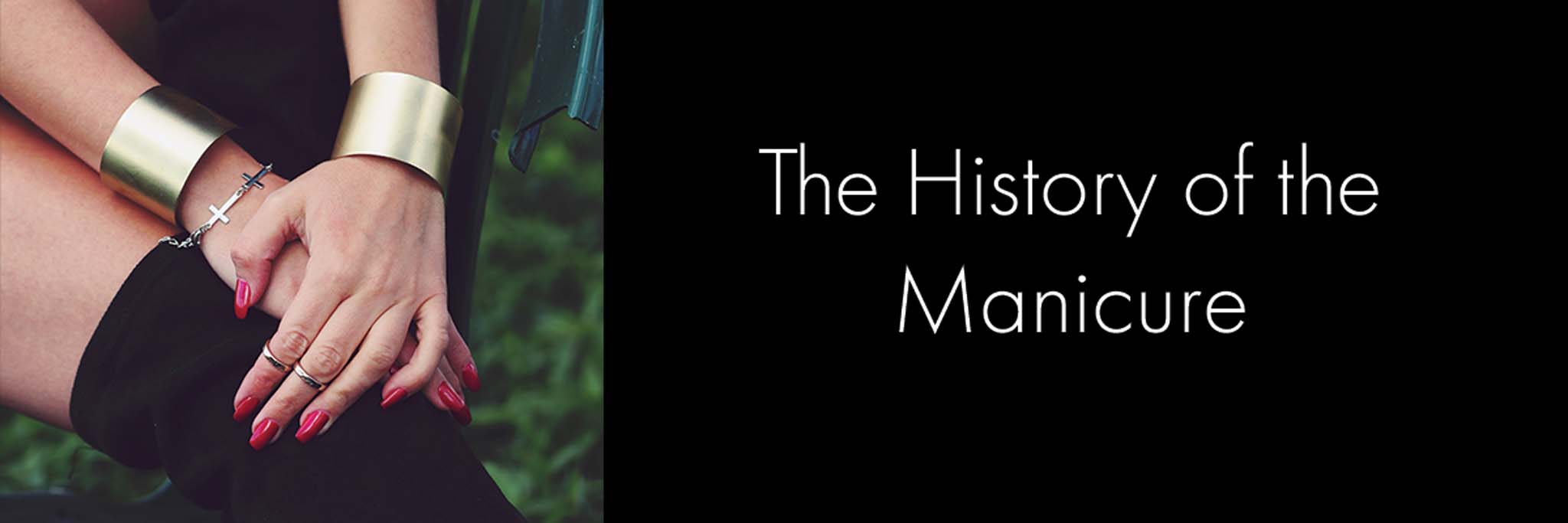Manicures today vary in shape, color and design. Some women grow their nails long and add stones and charms to their designs, while others keep their manicures short and stick with a solid nail or gel polish. But why do we paint our nails at all? Manicures have a rich and full history, opening a door for what we have today.
Between 3500 B.C. – 1781 B.C, ancient Babylonians used kohl with different colors to paint their nails, symbolizing different classes. Nobility could wear black while lower classes wore green. They even used lavish manicure tools made of solid gold.
A few centuries later, the women of Egypt and China were painting their nails to symbolize their nobility, as well. In Egypt, noble women bathed their hands in oil and stained their nails with henna. These women believed that the stronger the color, the more power you had. Cleopatra wore a blood red hue while Nefertiti opted for ruby. Meanwhile in China, the women (and men too) wore their nails very long and talon-like. They mixed together egg whites, wax, vegetable dyes, and other materials to create different color varnishes ranging from dark red to black in order to color their nails.
In the 19th century, women kept their nails short and almond-shaped, a fairly common shape today. Women covered them in aromatic oils and polished them with a soft cloth. A manicure was done using metal instruments, scissors and various acids. In 1830, a doctor started using an orange tree nail file on his patients’ nails, and his niece took the concept of nail care a step further by inventing and entire nail care system. It spread across the US, and every woman, no matter their status or income, was able to get a kit and care for her nails.
Then came the 1920s, which was the dawn of the automobile. Women began using car paints for their nails. In 1932, Revlon launched a groundbreaking polish that used pigments instead of dyes and was available at drug stores. Revlon produced clear nail polish based on pigments, not paint. This created the possibility of different shades of color. The Max Factor Company created a smooth nail polish in the color of turquoise, which pushed back on dominating red tones and brought manicures into a whole new era. Flappers and silver screen actresses helped popularize the half moon technique, as well as the French manicure.
In the 40s and 50s, every woman started to paint their nails at home. They also began visiting nail shops for their manicures. Television and movies turned to color, and actresses began wearing vibrant colors and kept their nails pointed. By 1950, manicures became a staple in the cosmetic industry. Basics of manicuring began to be publicly taught by beauticians and hair dressers.
Once the 60s rolled around, polish hues mellowed out with pastel shades. French manicures also experienced a revival thanks to Jeff Pink, the founder of ORLY, who used it as a practical nail style for the Parisian runways. In the 70s, the profession of a manicure designer was first defined as a specialist who can paint and pierce nails. These specialists soon became the ones who dictated manicure fashion.
In the 1980s, everything was bigger and brighter. Women started experimenting with colors, patterns and designs. Manicurists also started filing nails into square shapes rather than the almond shape of the previous decades. Men and women turned to dark colors in the 90s when the grunge movement began.
Now manicures can be anything and everything. Nail stencils, vinyls and decals have made decorating nails easier than ever. Acrylic nails and gel nails are common at every nail shop, and polish colors come in every color and glitter. We’re not sure what the next manicure trend will be, but we’re excited to find out.
Need a new manicure? Stop into VICI Capilli Salon in Milwaukee for a fresh new color or design.
Follow us on Facebook and Instagram for more beauty tips.
Sources: Marie Claire and Nail Art Journal

